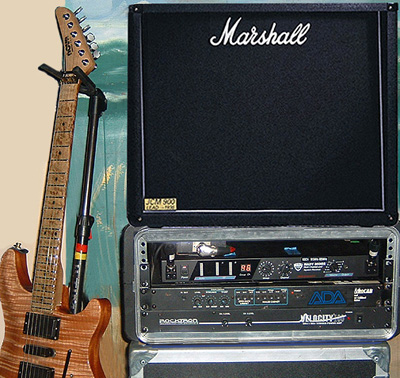The band I regularly mix is based on the east coast of Florida, and we often find ourselves playing in clubs right on the beach.
Unfortunately, in most of them, the stage is an afterthought or built for duos and trios, and most certainly not for a five-piece rock band with all of the gear, wedges and so on.
While the stages are small, the clubs themselves usually are not, requiring a full-range house PA – with everything running through it – to attain the expected output and coverage. We put microphones on drums, saxophone, and of course, vocals. Keyboard and bass are run direct.
What about guitar, that staple of hard rock acts the world over? It was the big problem consistently cropping up in my mixes, because the guitar cabinet mic invariably ends up just two feet or so from the full drum kit.
Try to run up a guitar lead and it sometimes sounds like the master fader has been turned up. Not good.
Solution? Get rid of the guitar mic. Simple enough, but how to retain the “acoustic” signature while making everyone, guitar player included, happy? Here’s how we’ve gone about it.
We switched from a stack of larger guitar amps to a single 12-inch loaded Marshall cabinet. This has reduced stage volume, making everyone in the band much happier.
In some situations, where the stage is really tight, we don’t even use the cabinet at all and simply run direct, with the guitar provided for everyone on the stage monitors.
Whatever the case, here’s the key part: the guitar is also routed through an ADA MicroCAB “cabinet simulator,” which, as the name implies, emulates a mic’d speaker cabinet, and then sends the signal direct to the console.
This 1U effects box (shown in the photo of the rack at right) allows you to tailor the sound for speaker size, open or closed back, on- or off-axis placement and cabinet resonance.
It also has a “pass-thru” option if you still want to feed a cabinet (or cabinets).
By reducing the instrument volume on stage, I can lower the volume on our stage monitors, providing a better mix in the house.
This also provides more overall control of the volume, and since I’m the one that’s always going to take heat from the club owner, I want it to be me that’s too loud – not the band.
















